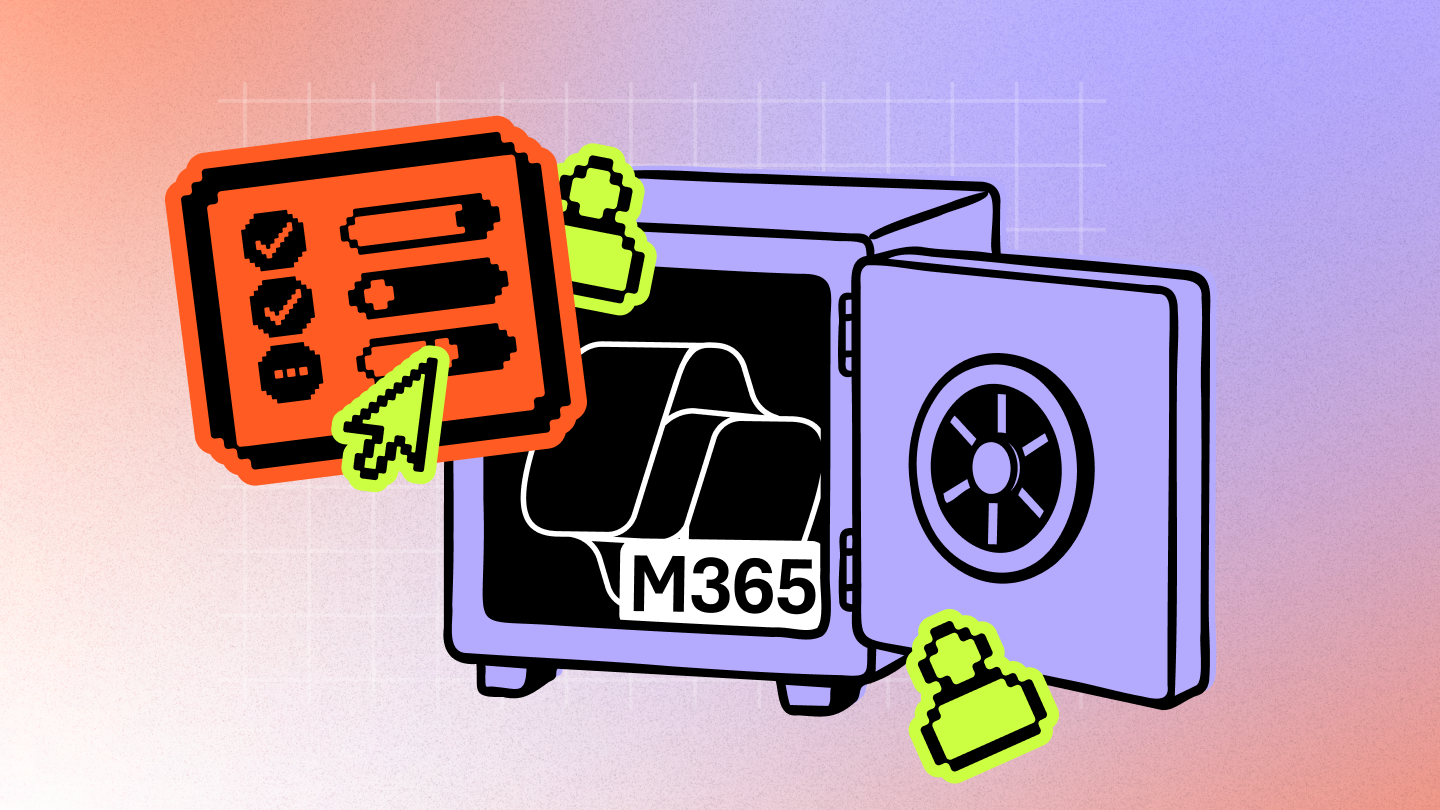Microsoft 365 process governance: Manage users, content, and collaboration
.avif)
Table of contents
Want to simplify your Microsoft 365 environment? Learn how a well-defined governance structure can streamline processes and improve risk management, especially as Microsoft 365 becomes more deeply embedded in your digital workplace.
In today’s fast-paced digital workplace, process governance is your blueprint for maintaining accountability, reducing complexity, and enhancing information protection across Microsoft 365.
Without sufficient oversight and clear organizational structure and responsibilities, your environment is at risk of spiraling out of control (think sprawl, murky accountability, and security risks).
Microsoft 365 is embedded in our daily workflows and is growing fast. Microsoft is adding new tools for communication, content, and automation—every day. That makes it harder to stay in control. A clear corporate governance strategy helps you manage the chaos, reduce risk, and scale with confidence.
In this article, we’ll break down what a process governance model is, how it supports secure collaboration, content management, and policy enforcement within Microsoft 365, and how to design a governance model that keeps your environment both productive and protected.
What is process governance in Microsoft 365?
Process governance is the strategic framework that defines how business operations are managed, tracked, and improved over time. In Microsoft 365, this means setting clear rules around who can do what, how data is handled, how collaboration stays secure and compliant with organizational policies and external regulations.
Without it, you risk losing control over your digital workplace—teams in Microsoft Teams run wild, data gets duplicated or exposed, and accountability gets murky. With a governance process in place, your environment stays organized, auditable, and scalable.
Key benefits of process governance in Microsoft 365
- Aligns collaboration and processes with your business goals
- Maintains compliance and reduce risk
- Shortens the time to completion for key projects
- Enables smoother adoption of new tools and automates routine work
- Boosts accountability and improves transparency across teams and departments
And to do process governance well, you need a proper governance process. That’s some fun wordplay, right? Process governance is the goal, your governance process is the method whose key components should include:
- Roles and responsibilities: Define who owns what
- Policies and procedures: Standardize how work gets done—naming conventions, sharing rules, retention policies
- Key performance indicators: Clear, measurable goals help track success and determine areas for improvement
- Process control and validation mechanisms: With the right checks and tools, processes deliver more reliable results
- Stakeholder involvement: Loop in decision-makers and end users to shape a process that works for everyone
- Communication strategy: Establish a clear way to share updates and decisions to keep everyone aligned
To help you fully grasp process governance, let’s clarify three related terms that sound alike but serve different purposes:
- A governance process is the how: it’s the way you apply those rules, roles, and standards that guide how your organization operates
- A governance framework is the structure: it outlines the policies, goals, and tools that shape your governance process
- Process management is the doing: it focuses on running and improving everyday workflows
All three work together to guide decision-making so your organization stays organized and in control.
Designing and implementing a process governance strategy in 8 easy steps
Before diving in, let's get familiar with the three main governance models that guide process governance.
- Centralized Model: One team or person leads all planning and oversight, setting and enforcing standards, which brings clear expectations but can leave others feeling sidelined.
- Decentralized Model: With minimal central control, teams take charge, but the lack of shared rules can lead to inconsistencies.
- Federated Model: Central leadership guides the big picture, and teams manage daily tasks. This model offers the best of both worlds!
No matter the model, a clear process governance strategy adds structure to how your team uses Microsoft 365. Here are eight simple steps to build one that fits your organization.
Step 1: Assess your current state
Start with a clear picture. How is Microsoft 365 being used today? Who decides what? Where are roles and responsibilities fuzzy? Does your current governance framework support accountability and transparency? This will show where you need to improve your governance model.
Step 2: Define your objectives and success metrics
What does success look like, and how will you measure it? Now’s the time to set clear, measurable goals that match your organizational priorities. Involve stakeholders from the start to keep everyone aligned!
Step 3: Establish a governance board or steering committee
Bring together a balanced group of stakeholders to lead process governance, then assign defined roles, ensuring clear accountability and oversight.
Step 4: Build the governance structure
Pick a governance model that fits your organization’s size, culture, and complexity—you’ve seen the three main types: centralized, decentralized, and federated. Then, map out decision-making, responsibilities, and how workflows will remain consistent across Microsoft 365—establishing clear ownership and expectations across teams. A well-designed governance structure ensures your policies and standards are scalable and repeatable as your organization grows.
Step 5: Develop process governance documentation
Now, put it in writing and document your governance framework clearly. Outline all roles, responsibilities, and decision-making procedures, so standards feel clear. It also improves risk management and supports compliance with regulatory requirements.
Step 6: Define controls, KPIs, and reporting loops
Use these tools to track your governance strategy’s performance so your Microsoft 365 use aligns with organizational goals. Every step of the way, you should focus on informing stakeholders, driving accountability, and showing progress.
Step 7: Develop a training and communication plan
Your team can’t follow a corporate governance strategy they don’t understand. Teach them the structure, their responsibilities, and procedures. Use clear, consistent communication to keep accountability front and center, and show how their work fits within the broader governance framework. Remember, the messaging should be clear, consistent, and practical!
Step 8: Execute phased rollout and validation
Don’t try to do it all at once! Roll out your governance strategy in steps, starting where it’s needed most. At each stage, check your progress, validate decisions, and gather feedback so you can adjust as you go to keep the governance model working well and your team on board.
Real-world examples of process governance in action
Process governance might sound like a high-level concept, but it has a real, on-the-ground impact across sectors.
- Tech startups: Use governance to streamline meetings and ensure clear decision-making.
- Retail operations: Define roles and access for frontline employees to improve efficiency.
- Nonprofits: Maintain donor data accuracy and financial oversight.
- Regulated industries: Ensure auditability and compliance through documented, repeatable processes.
Build a secure, well-governed collaboration environment in Microsoft 365: Key considerations
Microsoft 365 has built-in tools to help you govern collaboration and data sharing across your organization. Here’s how to leverage them as part of your corporate governance model:
- Microsoft Teams: Use Microsoft 365 Groups to manage Teams access and keep membership consistent across connected tools like SharePoint and Planner. You can also rely on cybersecurity measures like multi-factor authentication (MFA), conditional access policies, and data loss prevention (DLP) for safer data sharing and communication.
- SharePoint: Define permissions at every level—site, library, or document.Use versioning, audit logs, and Microsoft Purview to track changes, protect sensitive data, and stay compliant.
- Outlook: Email security plays a significant role in corporate governance and risk management, and Outlook supports that with tools like MFA and conditional access through Microsoft Entra ID. Apply DLP policies and sensitivity labels to prevent unauthorized users from sharing sensitive information.
Want to create Microsoft 365 collaboration policies that fit organizational goals? Start by establishing how your users work. What do they need to succeed, and how will they really use the tools?
Here are three methods for empowering effective, aligned communication and decision-making:
1. Create and share news on your SharePoint sites
Rolling out a new organization-wide communication plan? Use SharePoint News to keep your teams in the loop. News is shown as a personalized feed on the SharePoint start page and in the mobile app. It can also be shown on team sites, communication sites, and hub sites. Additionally, you can choose to show News in a Teams channel.
2. Customize Teams for effective communication
The value of Teams is in the way it brings together conversations and content in one place. Since Teams is where users actually work every day, one way to improve communication is by getting them to see Teams as the hub for teamwork in all forms. This enables them to apply daily forms of communication, such as chat, email, and calling, to their Teams conversations and workflows.
Little touches go a long way toward helping team members stay in sync and keeping the lines of communication open. Here are some ways you can customize Teams:
- Pin the Viva Engage app in Teams to bring it into Teams
- Add a community as a channel page
- Bring your entire SharePoint intranet into Teams to deliver it in the flow of work via Viva Connections
- Copy a conversation link into a chat or channel
- Bring Pages in Teams as a tab, particularly those Pages that offer end-user training and education, such as best practices for frequently required skills
In short: make it easy for users to have all their communication tools at their fingertips and give them options and flexibility as far as when, how, and where they keep in touch.
3. Viva Engage as an enterprise social platform
Use this tool to connect stakeholders beyond their immediate teams through communities of practice like leadership forums, learning circles, and role-based communities. These groups break down silos to foster collaboration, transparency, and continuous learning throughout the organization.
Want even more ways to strengthen your governance structure? ShareGate Protect gives you greater control over your Microsoft environment. Get visibility into areas that other governance solutions miss and access detailed information about any sprawl, oversharing, or data exposure. It also offers fast, AI-powered recommendations to fix issues and helps you maintain transparency, data quality, security, and compliance as you grow.
Governance processes made actionable with ShareGate
Process governance gives your organization clarity, control, and confidence—especially in fast-moving, distributed environments. When your governance model is clear and well-executed, teams stay aligned, risks go down, and productivity goes up.
ShareGate helps you put governance into action across Microsoft 365. From simplifying oversight to reducing manual cleanup, we help your IT team oversee your environment—secure, organized, and ready for what’s next.
.jpg)


.svg)
%20(1).avif)


.avif)








.jpg)


.png)
